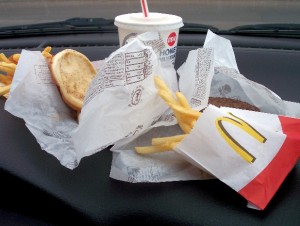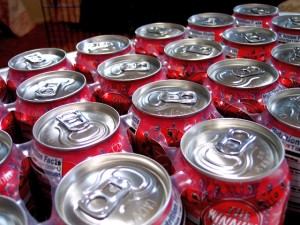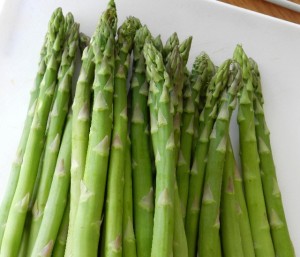 Eating a diet that is lower in total daily carbohydrates has been shown to cause weight loss. I won’t link to any of the studies, as they’re the same ones linked to by a lot of other nutrition bloggers and most readers don’t bother to follow the links anyway. What has yet to be sufficiently studied, however, are what happens to people that eat a low-carb diet for more than a year. This is an issue we’ll look at a bit further down, but for now let’s agree that eating low-carb results in weight loss, at least in the short term. It should be noted that other diets also result in comparable weight loss – over the short term anyway. Again, something we’ll look at further down. For now, let’s address some essential questions surrounding eating low-carb:
Eating a diet that is lower in total daily carbohydrates has been shown to cause weight loss. I won’t link to any of the studies, as they’re the same ones linked to by a lot of other nutrition bloggers and most readers don’t bother to follow the links anyway. What has yet to be sufficiently studied, however, are what happens to people that eat a low-carb diet for more than a year. This is an issue we’ll look at a bit further down, but for now let’s agree that eating low-carb results in weight loss, at least in the short term. It should be noted that other diets also result in comparable weight loss – over the short term anyway. Again, something we’ll look at further down. For now, let’s address some essential questions surrounding eating low-carb:
- What truly constitutes a “low-carb” diet?
- And is it really necessary to eat low-carb in order to lose weight?
The cutoff point for total daily carbohydrates in order for a diet or eating plan to be considered “low-carb” is subject to some debate. Perhaps it’s best to begin answering this question by looking at the number of daily total carbs in the Standard American Diet (SAD). Yes, it is SAD when you examine what we Americans eat in a typical day, but the rest of you non-Americans shouldn’t be so smug. It seems our dietary customs have caught on in your part of the world and is responsible for adding pounds and inches (or kilograms and centimeters) to your bodies as well.
It’s a SAD, SAD World

The SAD or “Western Pattern” diet is 50% carbs, which is below the 55% recommended amount. It surprised me that even this relatively high number of carbs isn’t considered high enough by the nutritional authorities. Taking a nominal calorie count of 2700 kcal for this diet, the daily total for carbs comes out to just above 300g. Even at half that amount, 150g, it is still within a range above what is generally considered to be low-carb.
The upper threshold for low-carb is somewhat arbitrary, but we need to set it somewhere, so let’s call it at 100g. I eat within a range from 50g-100g of carbs per day. This range most likely doesn’t permit me to enter ketosis (producing ketone bodies to be used for fuel instead of glucose). For my particular metabolic type, which I’ve determined to be one characterized by insulin resistance, I do quite well eating within this total daily carb range. My weight is down and more importantly, I feel good in terms of energy, stamina, and mood.
This raises a controversial topic, of which there are many where it comes to weight loss and nutrition, relating to which is more important when it comes to losing weight: calories or the amounts and balances of macronutrients (carbs, protein, and fat). As to be expected, there is a lot of misinformation, misunderstanding, and even (shudder) acrimony surrounding this debate. Again, without bogging things down with that messy thing called “science,” the brief answer is: “both matter.” But this pithy answer comes with a caveat: the weight of their individual importance varies with your metabolic type.
While some people seem to be able to eat just about anything they please – ice cream, donuts, beer, and get all three meals from a fast food drive-thru – and not get an ounce. These people are more the exception than the rule and I’m willing to bet that their underlying health isn’t all the great. Their blood lipids, degree of inflammation, risk for heart disease and they may even be dangerously close to full-blown type 2 diabetes. And yes, it’s possible to be at risk for diabetes or have full-blown type 2 diabetes without being overweight.
Health Isn’t Always About Body Shape

You can’t always gauge a person’s overall by simply looking at their body size. Conversely, people that are overweight (not obese) can be quite healthy. There are people that don’t eat what is considered a low-carb diet (carbs well over 150g per day) and are both quite healthy and are able to maintain a normal body weight. People such as these are blessed with a very healthy metabolism, and though they may indulge occasionally in unhealthy foods, they have, in general, a healthy relationship with food. Often times, people such as these eat a balanced diet consisting of mostly unprocessed, fresh foods consumed in amounts that don’t exceed the number of calories required to maintain their current, healthy body weight.
The rest of us are going to fall somewhere below these “metabolically blessed” types and must adjust our eating accordingly if we want to be both healthy as well as maintain a healthy body weight, which may not be quite a slim as we’d like.
Cut The Junk!

You can go a long way towards achieving this result by eliminating a lot of the sugar in your diet along with a lot of processed foods such as frozen dinners, packaged snacks, sports and energy drinks, candy, and ice cream. These products draw you in with their carefully crafted tastes with an emphasis on salty, sweet, and fatty flavors. The end result is your hunger isn’t fully satisfied and you wind up craving even more. It’s true that “you can’t eat just one.” I cringe when I hear someone say they ate an entire can of Pringles in one sitting or devoured a bag of Double-Stuffed Oreos while watching TV, but it’s certainly easy to see how this can happen. I’ll stop shop of calling this a true addiction as exists for drugs and alcohol, but since one’s sensitivity for these tastes become lessened; it requires ever increasing “doses” in order to satisfy the cravings. Once you begin to wean yourself off food with empty calories, you will find that your cravings lessen and foods that you once found unpalatable such as fruits and vegetables all of a sudden have a pleasing sweet taste which actually leaves you satisfied after eating it.
Not everyone needs to cut carbs down to the bare bone or gasp, eat a “zero carb” diet. In fact, I’ll go out on a limb and state that most people don’t need to go to these extremes. Yes, there are those with diabetes and who are extremely insulin resistant that probably need to eat a ketogenic diet, but ask yourself if you fall into that classification. Despite being insulin resistant, I know that I thrive by not being in ketosis. Instead, I eat the aforementioned “lowish” carb diet.
One Size Does Not Fit All!

The best way to find out the optimally balanced diet in terms of carbs, protein, and fat is to first cut out the processed junk items mentioned above. Do this for at least two weeks and see if you’ve lost weight, and more importantly, take an assessment of how you look and feel. From there, you can then start becoming more “carb aware.” This means reading nutrition labels as well as asking yourself if what you plan to eat is “high carb” or “low carb.” You don’t need to count calories or even carbs for that matter. Just eat regular meals and eat until you’re no longer hungry. Replace the starchy carbs and sugar-laden items that you used to eat with more vegetables, meat, poultry, fish, and healthy snacks such as nuts and fruit. And if you’re losing weight simply by cutting out the junk, then stick with it! No need to further restrict things like carbs or even fat.
Portion control is also important, so don’t eat beyond the point of being satisfied. You want to avoid the feeling of being stuffed at all costs even if it means saving some of your food for another meal. One of the side benefits of lowering total carbs in your diet is a gradual reduction in appetite and cravings. This will make it much easier to cut back the overall calories you consume in a day. By following a plan of “gradual immersion” it’s much easier to get to a point of healthy eating and more importantly, you set the foundation for sticking with it for the long haul and that’s where so many fail, regardless of the style of eating.



Leave a Reply